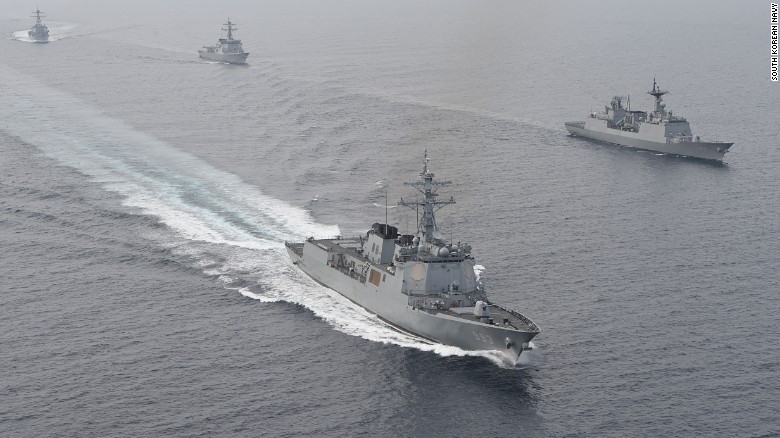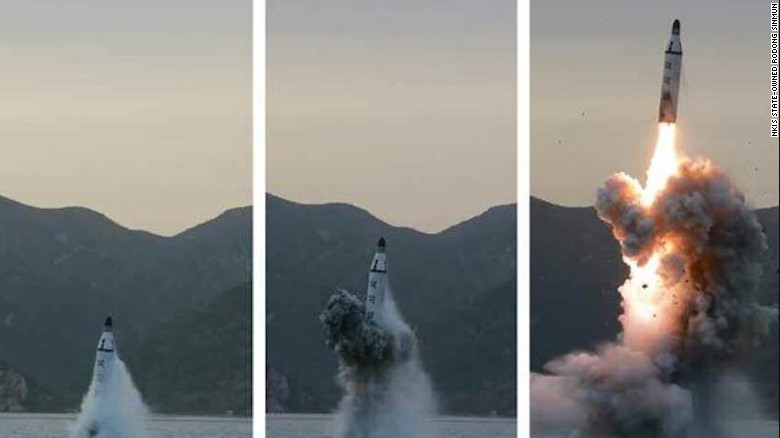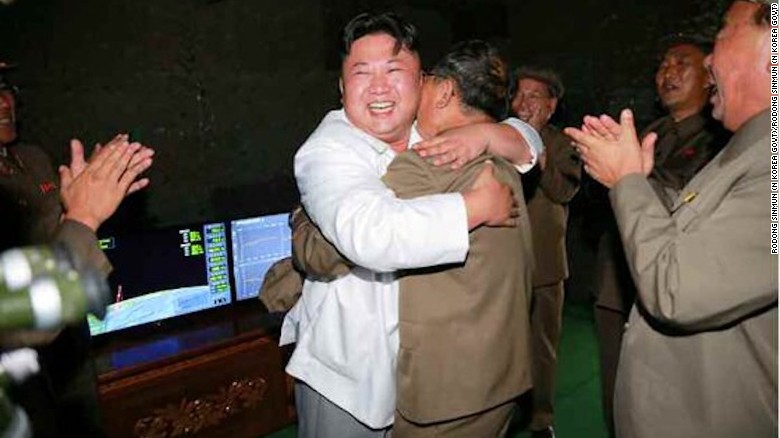US, South Korean missile destroyers in fresh show of force to North Korea
The US and South Korean navies put on a show of force in the Sea of Japan on Monday, the latest in a string of displays of military might in response to North Korea's testing of nuclear warheads and ballistic missiles.
Monday's exercises saw the US guided missile destroyer USS Spruance join ships, submarines and planes from the South Korean navy in waters east of the Korean Peninsula.
It was the first time U.S. and South Korean vessels have operated together in waters so close to the east coast of North Korea, a US Navy official said. The ships were armed with long-range, precision, land-attack cruise missiles, the official said.

The drills saw the US guided missile destroyer USS Spruance join ships, submarines and planes from the South Korean navy in waters east of the Korean Peninsula.
The naval show of force followed last week's flight of US Air Force B-1 bombers along the Demilitarized Zone, the closest the powerful, combat-tested heavy bombers have ever flown to the line separating North and South Korea, according to a U.S. military source.
What if North Korea's missiles come from underwater?
That flyover followed North Korea's announcement of the successful test of rocket engine. Earlier this month, B-1s flew over Osan Air Base, south of the South Korean capital of Seoul, in response to North Korea's fifth test of a nuclear warhead, a test Pyongyang said showed it's ready to mount warheads on missiles.


North Korea: The biggest issue for the next US president? 00:38
US-South Korea partnership

The drills show off US and South Korea military might.
"We work side-by-side with our ROK partners every day; we are by their side today at sea, and we will remain by their side to defend against North Korea's unprovoked acts of aggression," Rear Adm. Brad Cooper, commander of U.S. Naval Forces Korea and Task Force 78, said in a statement.
Notable in Monday's drills were the presence of the Spruance and South Korean destroyers equipped with the Aegis missile defense system. Touted by manufacturer Lockheed-Martin as "the world's most advanced combat system," Aegis can track more than 100 targets at a time and is the only naval system capable of intercepting ballistic missiles.
North Korea has increased its testing of submarine-launched ballistic missiles (SLBM) this year, its most recent in August flew around 300 miles (500 kilometers), which Pyongyang claimed as a success.

Pictures allegedly showing North Korea testing submarine-launched ballistic missile (SLBM) off the eastern coast of the Korean Peninsula earlier this year.
South Korea's intelligence agency NIS told lawmakers recently Pyongyang is progressing toward its goal of mounting a nuclear warhead to ballistic missiles "faster than previously estimated."
North Korea's submarine technology: What do we know?
"Our ROK-US alliance will counter the North Korean nuclear development and SLBM threats with determination," Vice Adm. Lee Ki-sik, commander of the Republic of Korea Fleet, said in a statement.
North Korea says US is the threat
Pyongyang blames the US for the escalation of tensions surrounding its nuclear program.
"(North Korea) had no other choice but to go nuclear" to defend itself "from the constant nuclear threats from the United States," Foreign Minister Ri Yong Ho told the UN General Assembly on Friday.
Meanwhile, experts disagree on whether the repeated shows of force by the US can stop Pyongyang's nuclear testing. South Korean officials believe Pyongyang is already physically ready to carry out its sixth nuclear test.

The show of force comes after North Korea fifth nuclear test.
The military displays show North Korea that "the United States won't be intimidated by their pursuit of nuclear weapons, much less the threat to use them," David Straub, a former State Department Korean affairs director, told CNN.
Shows of force are also "useful in reassuring the South Korean government and people that the United States has both the capability and the will to deter North Korea," Straub said.
But Victor Cha, Korea Chair at the Center for Strategic and International Studies in Washington, said the movement of military assets into the region is part of a US strategy that is "as predictable as it is ineffective."

North Korean leader Kim Jong Un oversees the August testing of a submarine launched ballistic missile test which he claimed as a success.
"With each missile and nuclear test, Kim Jong-un appears to be gaining confidence and certainty that the world will recognize North Korea as a nuclear state and deal with it on those terms," Cha said in congressional testimony on September 14.
Andre Gerolymatos, coordinator of the Terrorism, Risk and Security Studies Program at Simon Fraser University, told CNN flyovers and exercises are "not sufficient to cause alarm" in North Korean leader Kim Jong Un.
"Like all bullies he only understands force," Gerolymatos said.
News Courtesy: www.cnn.com











